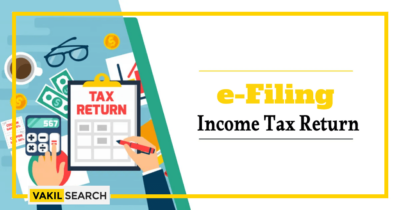Tax obligations for a company are fixed, whether or not they are incorporated, an association of people (AOP) or a body of people (BOI). Here’s everything you need to know.
Understanding Association of Persons (AOP) and Body of Individuals (BOI) under the Income Tax Act of 1961
The Income Tax Act of 1961 in India provides a comprehensive framework for taxation, encompassing various entities and arrangements. Two such entities defined under this act are the “Association of Persons” (AOP) and the “Body of Individuals” (BOI). These terms often cause confusion as they are occasionally used interchangeably. In this article, we delve into the nuances of AOP and BOI, highlighting their differences, taxation methods, and share of income rules.
Association of Persons (AOP): Definition and Composition
An AOP is essentially a group of two or more individuals, whether incorporated or not, joined together for a common goal, primarily to generate income. Contrary to popular belief, the creation of a formal contract is not a prerequisite for establishing an association of people. Both companies and individuals can be referred to as a “person” in the context of AOP, showcasing its inclusive nature.
Body of Individuals (BOI): A Distinct Composition
BOI is another entity defined under the Income Tax Act, sharing similarities with AOP but with distinct characteristics. While the association of people can include businesses, BOI comprises only individuals who come together to earn income. In essence, AOP may encompass legal entities, while BOI is exclusively composed of individuals.
Differences Between AOP and BOI: Clarifying the Terminology
Despite occasional interchangeability, AOP and BOI are distinct arrangements. association of people’s inclusive definition allows it to involve businesses or individuals, while BOI is confined to individuals united for income-generating purposes. Legally, not every gathering qualifies as an AOP, emphasizing the requirement for engagement in income-generating activities.
Taxation of AOP and BOI: Evaluation Techniques
The evaluation of AOP and BOI for taxation purposes involves specific techniques:
- Unknown or Ambiguous Individual Shares:
– AOP or BOI, where each member’s share is either unknown or ambiguous.
- Known or Fixed Individual Shares:
– Unlike in AOP or BOI, where each member’s share is known or fixed.
Taxation Rules for Individual Shares:
When a member of AOP/BOI has a total income surpassing the maximum exemption limit, the assessment includes:
– The highest marginal rate of 30%.
– A surcharge of 10.15%, if applicable.
– A 3% Cess on the total income, excluding special taxation.
For members with income below the maximum exemption limit, association of people will pay tax on its overall income at slab rates applicable to an individual, benefiting from the basic exemption of ₹2,50,000.
Share of Income and Exemption Rules
– If the AOP/BOI pays tax at a greater or marginal rate, the portion taxed at this rate will not be included in members’ total income, thereby being exempt.
– If the AOP/BOI pays tax at the exact rate applicable to an individual, the resulting share of earnings will be included in each member’s total income.
Taxation of AOP: Varied Inclusions and Exemptions
AOP’s tax liability is diverse, considering the potential inclusion of both individual and corporate members. If the total income of any association of people members exceeds the maximum exemption limit, the taxation involves the highest marginal rate, surcharge, and cess. However, if no member’s income surpasses the exemption limit, AOP benefits from slab rates applicable to individual taxpayers, incorporating the basic exemption.
Taxation of BOI: Exclusivity and Individual Liabilities
BOI, being exclusively composed of individuals, follows a distinct tax framework. Individual members are assessed based on their total income, with applicable rates and exemptions. The taxation of BOI members hinges on their individual financial standings, reflecting the principle of taxing each member according to their income bracket.
AOP and BOI: Key Differences in Taxation
When it comes to the taxation of AOP and BOI, the key differentiator lies in their composition and the nature of income earned. association of people, being more inclusive, can consist of both individuals and businesses. In contrast, BOI is specifically limited to individuals pooling resources for income-generating activities. This distinction plays a significant role in determining the tax liabilities and exemptions applicable to these entities.
Share of Income Rules: Balancing Taxation within the Entities
The share of income rules for AOP and BOI plays a crucial role in determining how taxation is distributed among members. If association of people pays tax at a marginal rate, the portion taxed at this rate is exempt from inclusion in members’ total income. Similarly, if BOI pays tax at individual rates, the resulting share of earnings is included in each member’s total income.
Conclusion: Understanding the Intricacies
In essence, comprehending the tax implications of AOP and BOI is vital for effective financial planning and compliance. Whether you are an individual, a corporate entity, or a professional tax advisor, a nuanced understanding of these entities ensures accurate tax assessments and compliance. For any queries or further assistance on navigating the tax landscape, Vakilsearch stands ready to provide comprehensive insights and support.
Frequently Asked Questions
Is Association of Persons a Body Corporate?
No, an Association of Persons (AOP) is not considered a body corporate. AOP is a distinct legal entity formed by two or more individuals who collaborate for a common purpose or objective. Unlike a body corporate, an AOP is treated as a separate taxable entity, and its income is assessed at the individual level.
Is Any Association of Two or More Persons or Entities?
Yes, any association involving two or more persons or entities can be recognised as an Association of Persons (AOP) under Indian tax laws. AOPs are formed for various collective purposes, such as joint business ventures or collaborative projects. The key criterion is the joint effort of individuals or entities towards a common goal, leading to the creation of a distinct legal entity for tax assessment purposes.











